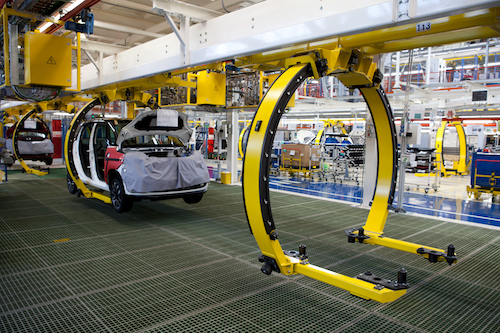With the increasing number of automobiles on the road, the competition in the automotive industry is rising as well. Every automaker strives to make more automobiles—in 2019, almost 92 million automobiles were manufactured globally. However, with such a high number of automobiles in production, the possibility of manufacturing errors has increased. So, how can an auto manufacturer tackle this problem?
The answer is machine vision.
Machine vision is critical in the highly automated automotive industry. According to a recent report, the global machine vision market will be worth $31.1 billion by 2024. The report suggests that the demand for machine vision in the auto industry is a primary growth driver.
What is the Importance of Machine Vision in the Automotive Industry?
Most industries are now starting to focus on automation. The goal is to improve manufacturing processing while reducing manual labor. So, how does machine vision help attain this goal?
For one, it adds flexibility to robots in the line. Generally, robotic systems can only perform the same task repeatedly if there are no variations. However, robots equipped with machine vision cameras can account for variations in applications—such as varying part orientations—allowing applications such as random bin selection.
Another (and arguably a bigger) reason machine vision is crucial is that it allows for remarkably accurate inspections. To satisfy the high demands for quality and accuracy in automobiles, inspection standards are also set high. A single car comprises approximately 30,000 parts, counting down to the smallest plates and screws—and each one must fit and perform flawlessly. Any flaw in any of these 30,000 components can be dangerous to the customer and expensive to the manufacturer. Machine vision-based systems can inspect these parts for defects far more efficiently than human inspectors.
Applications of Machine Vision in the Auto Industry
You have probably figured out why machine vision is essential in the automotive industry. But how can automakers put it to use? In what ways can it aid in the production of higher-quality automobiles? Let’s look at it through the lens of its applications:
- Automated Bin Picking: Automakers must deal with a large number of vehicle parts. These parts are often stored in bins. It is common for more than one part to be stored in a bin. Sorting through these parts can take quite a long time. The idea of automating this process was difficult to grasp for many automakers since machines can pick any part at random from the bin, necessitating regular monitoring. However, with the help of machine vision, this process can be completed in a matter of seconds. A machine vision-driven system can detect the position and orientation of even the tiniest of auto parts, sort them using pattern recognition technology, and record the entire procedure for future reference.
- Weld Defect Detection: Welding imperfections cannot be seen with the naked eye. They can, however, be detected using machine vision. A machine vision-driven system can detect welding defects using pattern recognition technology. The system compares welding images to database images and sorts them into “correct alignment” or “incorrect alignment.” Parts that fall into the latter group are rejected.
- Gauging Inspection: Gauging inspection is another machine vision technology utilized in the auto industry. Part dimensions can be quickly inspected using a machine vision-driven system. The system can calculate the volume of parts such as pistons and brake valves. It can also scan the glue head placements and identify whether or not the space dimensions are compliant.
- Metal Stamping Inspection: Machine vision also helps automakers in identifying the shape and size of stamped parts, inspecting VIN (Vehicle Identification Number), and tracking engine blocks.
- Electronic Parts Inspection: Machine vision can also be used to inspect the placement of electronic components in automobiles. It scans and detects the placement of parts such as batteries, printed circuit boards, module seals, cooling modules, switch assemblies, and others.
- Safety Parts Detection: The safety components of a vehicle define the level of safety it will provide. Hence, the precise placement of safety components is critical. Machine vision can aid in the inspection of safety components such as airbag canisters, components and fabric, brake pad and valve parts, torque converter, engine valve, and others.
- Testing for Powertrain Manufacturing: The parts of a vehicle that provide power are referred to as the “powertrain.” In simple words, the powertrain is what moves an automobile—therefore, the mechanical functionality of an automobile is dependent on this assembly. The improper assembly might result in unexpected vehicle breakdown and other problems. Machine vision aids in the inspection of steering wheel knuckles before module assembly, the inspection of the position and size of side-frame mounting holes, the analysis and inspection of camshafts, the testing of proper piston placement in cylinder blocks, as well as other tasks.
- Performance Analysis: It is critical to assemble and inspect the right parts and their placements. However, it is also crucial to test whether those parts perform well. Machine vision offers accurate inspection results for vehicle performance—it examines battery and motor systems, as well as power electronics.
Let Universe Kogaku’s lens application engineers supply you with the best lens solution.
Universe Kogaku has a highly skilled engineering team capable of designing and manufacturing optical lens assemblies for many robotic and machine vision system applications. If you need premium custom lenses to boost the efficiency and profitability of your automotive manufacturing operations, please get in touch with us at 1-516-624-2444 or info@universeoptics.com. One of our trained lens application engineers will get back to you as soon as possible.
